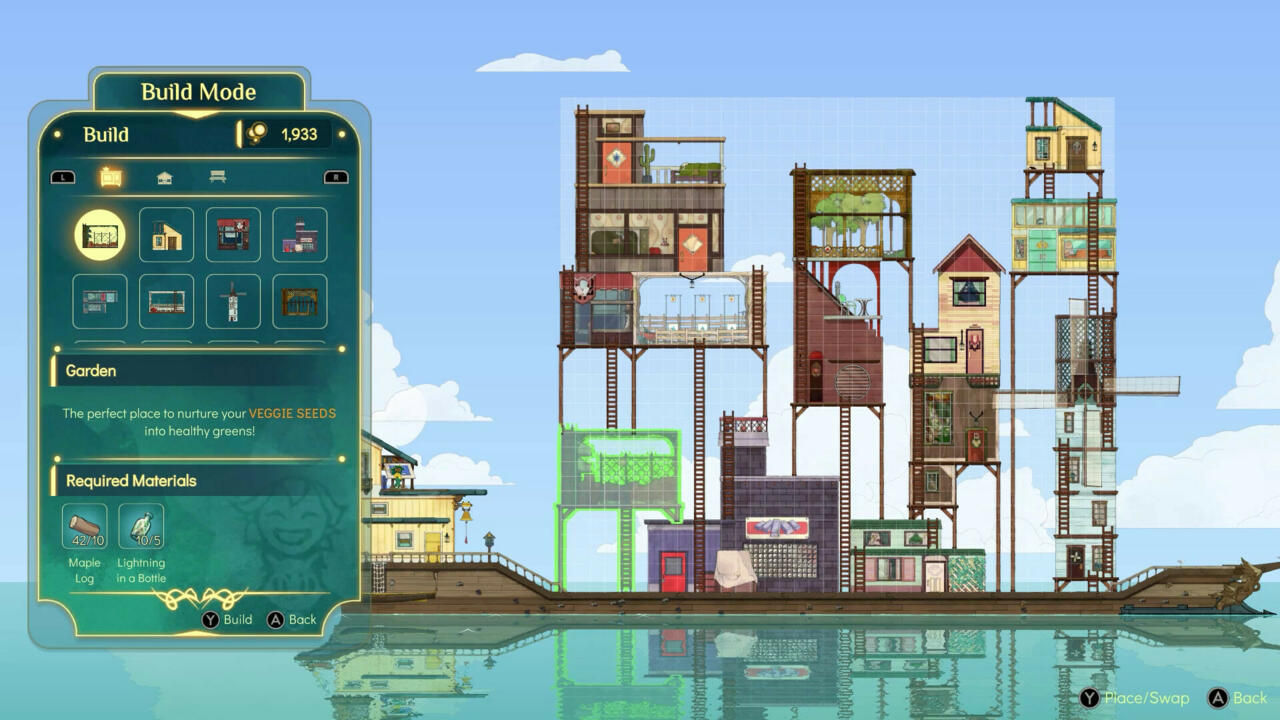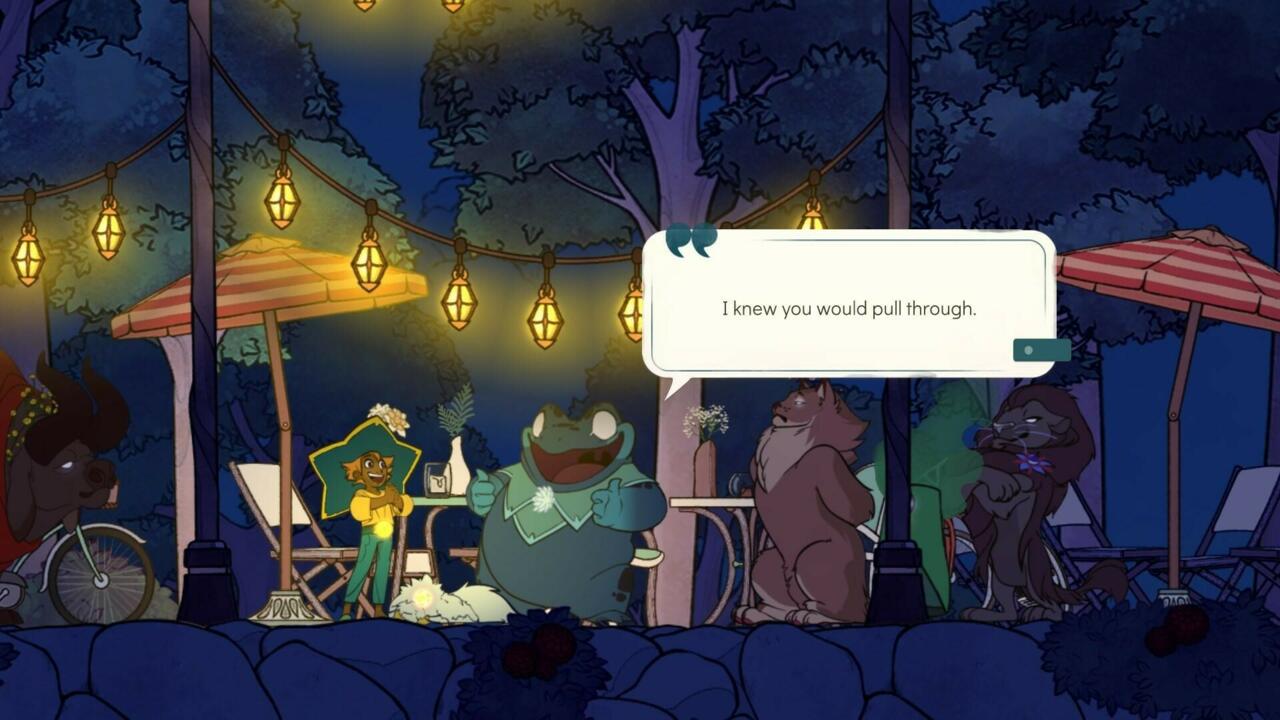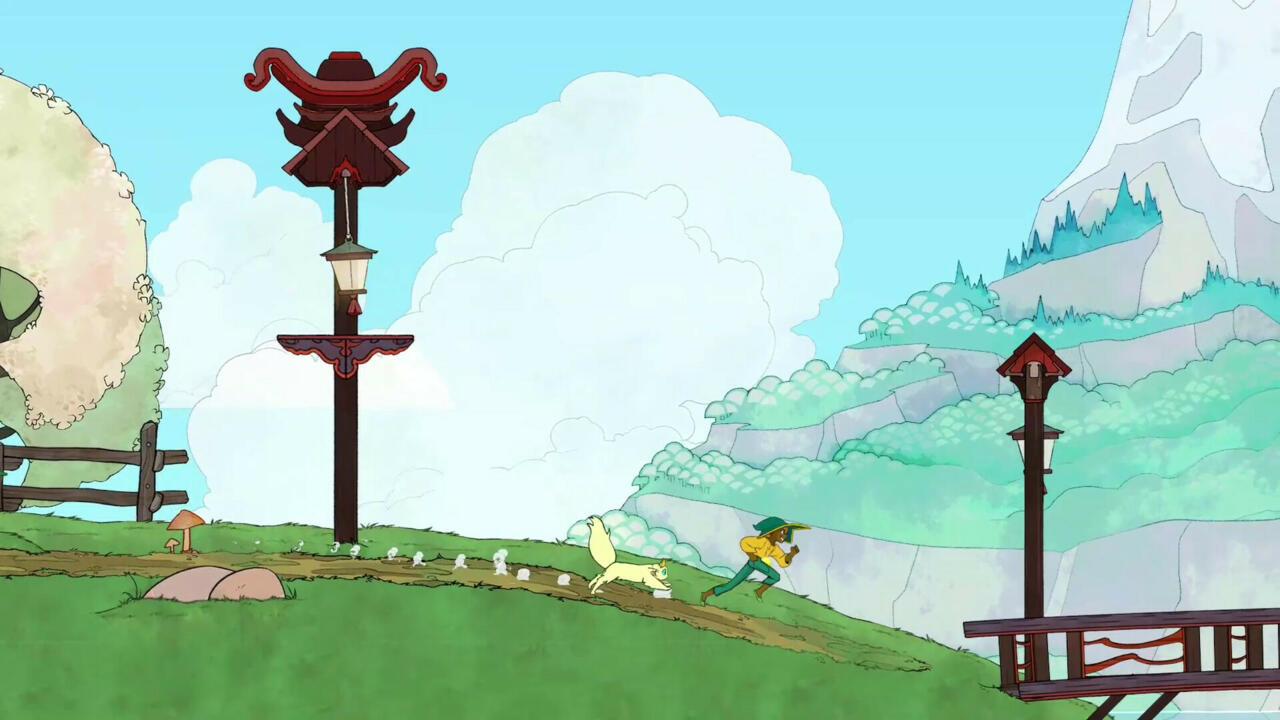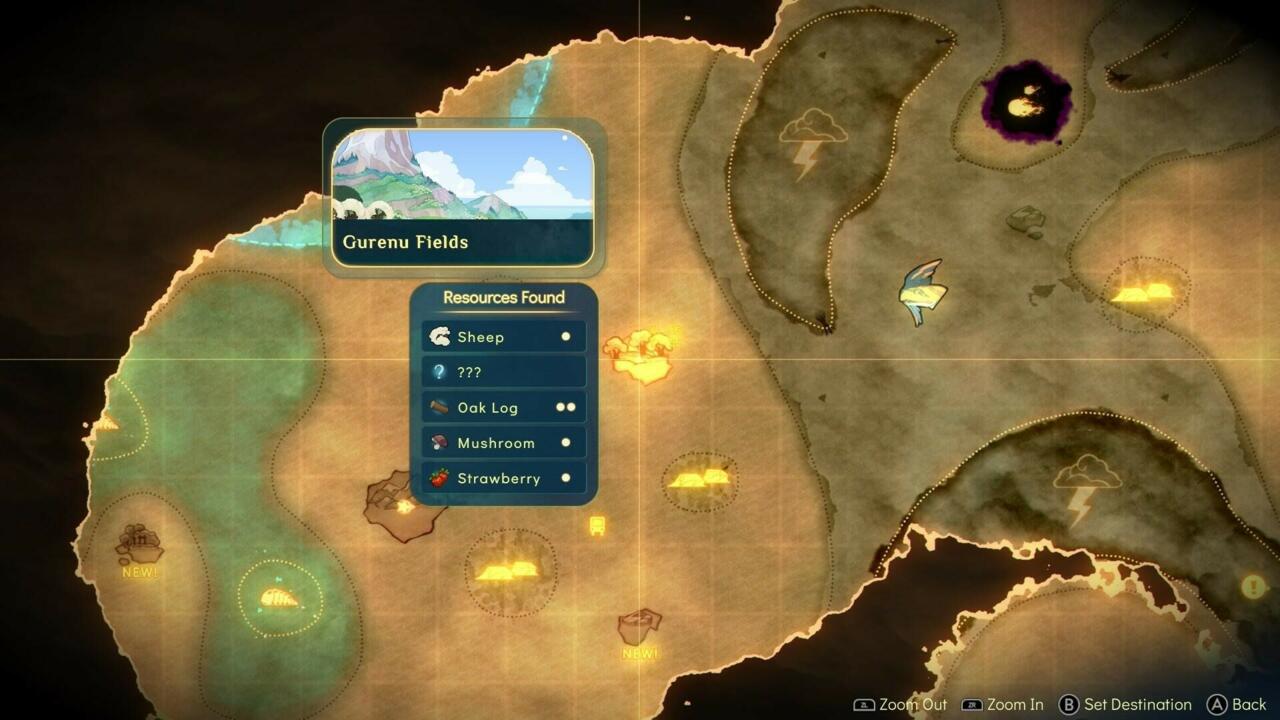Developer Thunder Lotus and iam8bit are scheduled to release physical editions of Spiritfarer for PS4 and Switch on August 3. Ahead of the release of the physical editions, I sat down with creative director Nicolas Guérin to discuss how folks at Thunder Lotus embraced vulnerability to create a death-positive game that deals with themes of grief, love, loss, and self-care.
In our conversation, Guérin shares how the stories told in Spiritfarer were inspired by the team's own experiences with loss. He also talks about early concepts for the game--like how Spiritfarer originally saw Stella conducting a train as opposed to steering a boat and how the cyclical gameplay loop was once tied to the changing of the seasons--and explains why these ideas were ultimately cut. There's a moment we rag on The Legend of Zelda: Spirit Tracks and bond over our love for If Found too.
As a final note before jumping into the interview, the last question of our conversation goes into spoilers for Spiritfarer. If you still haven't beaten Spiritfarer (which you should--Spiritfarer was one of GameSpot's Best Games Of 2020), don't keep scrolling when you get to the part of the interview where Guérin asks me whether I've beaten the game and I tell him I did. We discussed the ending of the game after that. There is another spoiler warning further down in the text right before we go into spoilers, but I wanted to give y'all a heads up upfront.
So when you were brought onto the project, what did Spiritfarer look like? Was Thunder Lotus already leaning toward a game that explored aspects of love and loss in relation to death, or was it in a more general state?
From a creative standpoint, the company was still pretty much in the hands of Will Dubé, the CEO and co-founder. The concept of death was there in Jotun, was there in Sundered, and was of course there in Spiritfarer. [Spiritfarer] was a game on a train at first, and then morphed into being on a boat.
But the through-line, the common point between all those games was, of course, death. Jotun and Sundered had a pretty much head-on approach to this, whereas Spiritfarer didn't really have that. Early on, it didn't have any type of death positivity or wholesomeness or tenderness, but those themes were there as a meta concept. Like, "Let's talk about death from a radically opposite perspective, from an almost antagonistic view."
And that clicked. I knew that it was something that worked, because it allowed us to create a game in which death is talked about from a common-people point of view. Of us passing away, and our relatives passing away, and connections passing away, in a much more intimate, personal angle.
You mentioned something really interesting in that answer: Spiritfarer wasn't always set on a boat?
Yeah, the original train idea was directly inspired from Spirited Away, which had a big influence with the game's inception. There is that scene in Spirited Away where Chihiro, she's basically taking the train with the faceless stranger, and the train travels on the ocean. It's a really chill vibe, yet melancholic, beautiful, and poetic.
Fun fact is that I'm a Zelda game fan, and one of the Zelda games that's least appreciated is Spirit Tracks. It was on the DS, and it was right after Phantom Hourglass, which was an awesome game, because you're on a ship and could basically use your map to pinpoint places. "Oh, I want to go there. There might be a chest here. That's going to be cool to find." Whereas Spirit Tracks was mainly boring as hell. You had to place tracks on the map and then--oh man, I probably am a boat person much more than I'm a train person. The train itself is interesting in a fantasy, but for Spiritfarer, it just didn't click.

Also, we [initially] had the concept of seasons. It was a bit fatalistic. You had the four seasons--so spring, summer, fall, and winter--and then you had a death season. Then it sounded like the clock was going forward, and at this time, you had no choice but to say, "Boom, this is where someone dies." It wasn't that great. Also, crafting islands and places in four types of biomes and environments was kind of nightmarish. So we dropped it for both scope and metaphorical reasons. For the game, it didn't really serve a purpose that much.
I distinctly remember talking to you about Spiritfarer before its launch and thinking to myself, "This is a small team and this game sounds like a great 10, maybe 15-hour at maximum experience." And then PR sent over the code with a note that the game is 35 to 40 hours long. That was a huge surprise, and now you're telling me that, at one point, y'all were planning to put even more into the game, like changing seasons. That's wild.
Yeah, that's right. We had a hard time keeping track of ourselves, because we were just, at some point, adding stuff on top of one another, things we liked and really wanted to do. Also, the playtime is really inflated by the mere concept of it being a farm sim, in which you have resources to craft and to get. The first iterations were much more game-heavy, in which you had to craft more resources, find more of them, or different types in bigger quantities. And then I toned that down pretty heavily. It became something that was still interesting, but at a simple level, not extremely complex.
When you're making a game like that, you're playing other competitors. I was playing My Time at Portia, and of course I was playing Stardew Valley again, Harvest Moon, and those games that you have extremely long play times. Playing through Stardew Valley, I mean, how would you evaluate that? 50, 60 hours? I don't even know if it's quantifiable.
I know, right? I'm still playing it.
Exactly. And this was the thing. To a degree, when we started conceptualizing the project, Will and the team were like, "We should make it endless, shouldn't we? I mean, it's a farm sim." But how can we make an endless game about finite lifetimes? So it became kind of a weird hybrid. The playthrough is inflated because of this, mainly.
And then the spirits, they all have stories to tell, and the amount of storyline is quite large. There are maybe 90,000 words in Spiritfarer, which is quite large for three writers.

Where did the inspiration come from to ask the team for their stories about their loved ones to inform the narratives present in Spiritfarer?
There are many things that separate traditional art forms from games. I do believe, very sincerely, that games are art. And I believe one of the key concepts some developers aren't naturally used to is the fact that, when you're doing art, it has to be coming from you, from yourself. You have to expose yourself. You have to be vulnerable. You have to basically bleed your heart out on a movie, a painting, a book. You have to be sharing personal things.
Putting more of you out there is key to trying to make games that are a bit more artistic and emotional. When I started writing the characters, they were a mix of public figures that I knew off our history, or literary characters, or general archetypes. And I had something good, but it was far from being interesting enough.
When I came back from a month of research and documenting end-of-life care facilities and meeting people at the end of their lives, I felt like I had to write more about their own anecdotes and the way they talked about their own lives.
Still, I felt it was not enough, because I had stories, I had true stories, but I didn't have our stories. And it was the last missing piece. I believed the game had to be as truthful as possible. It has to sell something that we, ourselves, had experienced.
The first interview was Marie-Christine Levesqu, the artist. She talked about her grandmother, who, in part, inspired Alice. And Alice is really not entirely her grandmother. Alice is a mix of tons of things, yet the stories she told me were instrumental in trying to define the character. So I guess that blend only came to fruition and only came to be when all those elements were used, rather than just simple made-up stories.
I never heard of anyone doing this before, though. Probably, they should, more--try to use their own lives as examples of things to do. Some other indie games have tried... well, actually, I don't know if they were team efforts, but I've seen some indie games trying to accomplish that, like That Dragon, Cancer. Another good reference of this is a game I played in December: If Found? I don't know if you've played If Found.
Oh, I love If Found! It's great.
If Found is really, really cool. And I had the chance to talk with the lead developer. Basically, it's her story there in the game, and the way she tackled it was so interesting and so personal. It was so refreshing, but it's literally directly understandable. You're playing someone's story in If Found. It's her story, basically, that she's retelling through an interactive format, through a video game. I guess we were not expecting a similar response to Spiritfarer, because the game felt like it wasn't a literal personal endeavor, yet was kind of one. Probably, that was the difference.

That had to be a pretty raw process, emotionally. Just getting everyone to open up about their stories for a product y'all were then going to sell. How did the team approach it?
The interviews were only made one-on-one, so myself and that other person. So I had maybe four or five people coming forward with this. And then I only took notes--I mostly listened though, to not interfere with the process.
The visuals of the characters happen first, which is weird, but the team actually drew the characters themselves. So I already had a snake, I already had a lion, all those characters. I already had some form of a very raw personality, because every character was ranked from one to three--one being attuned with their inner selves, their inner animal, and three being more human-like.
Summer was a garter snake. She was inspired by a mythological creature at first, because every character had the mythological counterpart in the Greek mythology, but that was barely used. And a flower. So garter snake and oxeye daisy for Summer. And so I had a snake; Summer was drawn. She wasn't fully animated, because then [animation director Alex Boyer] had to wait for the character to be more fleshed out to animate her fully. But I had the snake.
Now, the snake itself had somehow the premises of being someone. All I had to do was to connect the dots and say, "Okay, I do have a number of archetypes." So in my head, I had maybe 20 to 30 archetypes, which was a mix of personality, a journey at the end of their lives, an inner conception of death, and the type of stories that I knew I wanted to tell.

And then, on the other hand, I had visuals and the personal notes. I just threw all that in the mix, and we started. The very first meeting that happened with everyone involved was a meeting in which I recounted the basics of the character, then the writer/lead designer, there with me, had to craft the request somewhere from a game center perspective. What is that person going to be in the game? What's that person going to ask? What's the questline going to be, knowing all the elements I had described of the character itself?
I guess the most important part was to make sure that, beforehand, every character's journey had to be defined, which is basically something that happened every time I met someone at the end of their life. From the moment you know you're going to die to the moment you actually die, what's your journey like?
Alice was a hit because, sadly, it's quite common for elderly patients to suffer from old-age dementia. I knew about the stats of the disease, of course, and what people die of in the Western world. I would have wagered that people would connect with Alice, because many elderly actually suffer from dementia before dying, which is really sad, but it's statistically extremely common.
Spiritfarer has a rather wide cast of core characters and an even broader array of side characters populating its world--why craft such a large experience as opposed to creating something smaller and more intimate?
That's a good question, actually. Well, you've played through the end, so you know what's going on, yeah? You understand all that?
Yeah. I cried for like 15 minutes. No biggie. (This is your final spoiler warning for the ending of Spiritfarer by the way.)
The game itself is a construct from Stella's mind, and that's what she thinks of this all. That's how she recollects--her memories are alive. That's how she reminds herself of things. And now, why such a complex world? Well, it feels complex, but it's really not that complex. You have to know that building the world was actually much simpler, because when you're actually crafting a real world, it has to have an ecosystem. It has to have a history. It has to have cultures, people, a story. It's a complex thing. It's long and it can take many years to create, whereas the spirit ferry was more an emotional world, in the sense that that's how Stella saw things. That's her dreamlike rendition of it.
One of the most terrible concepts of the Greek underworld, to me, is the lost souls of the underworld. Basically, if you die in the Greek world, Ancient Greece, you have to have coins with you, in your mouth or your eyes, to pay Charon's passage. You have to pay your passage over the Styx River. But if you don't, you're screwed. It's done. Just don't even try. You're going to basically be a lost soul airing in the Interworld forever. It's like, "Wow, that's harsh." You don't have a coin? Too bad for you. You haven't paid your passage? You're done for. It's the eternity of nothingness for you. And it sounds to me like Stella, herself being very knowledgeable of the Greek mythology and being a palliative care nurse, would always see this concept as something terrible.
To me, they're what we call the denizens: the little characters with the little smoke plumes where their heads are. All those people are dying without her being in direct connection with them. The world was meant to be weirdly alive to make it more compelling. But those denizen characters were actually the unnamed dying people around Stella, if that makes sense.

As for everything in the islands, the people are all somehow related to spirits, but not all of them. As for the places, they also came from the Greek underworld, Hades. At the center, you have the Blessed Isles, which is a place where you have to have the perfect life, and then you'd go there. Good for you. And then, the further you go from the center, the less cool places are.
So Spiritfarer's world was built this way. In the center, you have places that felt very spiritual, places that were nice to live in, linked to Stella's old life: Northern France, Japan. And then, the further you go, you have the urban environment, which is like Montreal. Basically, where she lived her adult life. And toward the end, it looks like a bit of an eerie mix of dark forest and a dark ocean, because she's learned about her fatal disease there, in a forest in Western Canada. That's why you feel like, the further you go from the center, the less appealing the places are. But it's all metaphorical.
So it was both simple and complex to create, but that's not really closely tied together. We followed a simple set of rules, and that was it.
Spiritfarer is available for Xbox One, PS4, Switch, and PC and can be played on Xbox Series X|S and PS5 via backwards compatibility. In GameSpot's Spiritfarer review, Hope Corrigan gave the game a 9/10, writing, "All of Spiritfarer's novel mechanical variations kept potentially repetitive actions from ever growing old. Its gleeful little islands got more exciting to explore as new platforming abilities were unlocked. The characters, even small ones with funny little quips of dialogue that you encounter, were friends that I cherished. I absolutely adored existing in Spiritfarer's beautifully animated, compassionate world so much that it genuinely came to feel like home."

